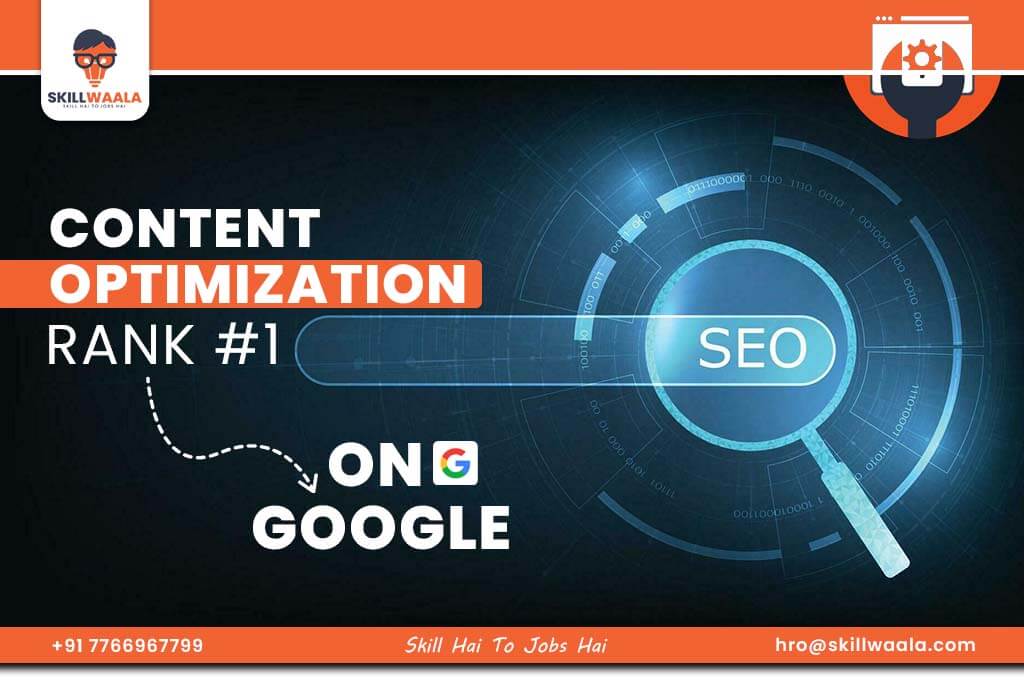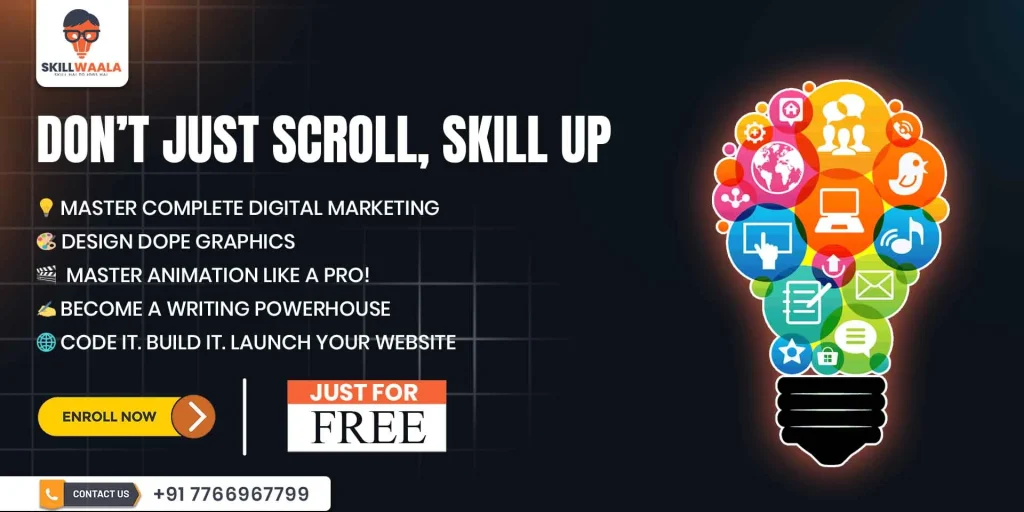Do you want to rank higher on Google? With content optimization, you can rank higher! In this blog, we will explore the most important steps to make your content SEO-friendly and user-friendly. So read it till the end so that you can enhance your content to get more traffic and conversions. Let’s get started.
What Is Content Optimization?
Content optimization is an SEO strategy and process of improving and updating your website content so that it performs well and ranks higher on SERP (search engine results page). The primary goal of content optimization is to keep your content fresh, accurate, and relevant so that it appears in users’ search results, attracts them, and holds their interest.
Why Content Optimization is Important?
Content optimization is important as it can help your website appear higher in search engines attract users to your site and improve conversions users to take actions that support business goals. Here is why it is important:
- Improves search engine rankings:
Your existing content can rank higher on SERPs if it is optimized for your target keywords.
- Increases website traffic:
Higher rankings mean your content is more visible. This can bring on more organic visitors to your site. There are higher chances of lead conversions as well.
- Maintains Search Engine Ranking Over Time:
If you regularly optimize your content with the latest insights and updates then you can maintain or even improve its search engine rankings for a period of time.
- Better Return on Investment (ROI):
If you have budget constraints or running on a limited budget, then it is viable to optimize old content as it is faster and more cost-effective than creating new content.
Also Read: What is Keyword Research and How to Do it?
Keyword Research & Placement
Keyword research means finding out what people are searching for on Google and using those words in your content. But they should be placed naturally, not forcefully.
Example:
If your target keyword is “Best Digital Marketing Course in India”, then use it like this:
- Title: Best Digital Marketing Course in India | Learn with Live Projects
- Meta Description: Join the Best Digital Marketing Course in India that provides hands-on training & job assistance to kickstart your career.
- Content: If you are looking for the best digital marketing course in India, choose one that offers real-world projects…
If done wrong, like if you use too many keywords which is also known as keyword stuffing then Google will penalize your content. If very few keywords are used then your content will rank low on Google.
Content Readability & Structure
Your content should be easy to read. Use short sentences, headings, bullet points, and paragraphs to improve readability.
Example:
Bad Example: SEO is important. It helps websites rank. You should do on-page and off-page SEO.
Good Example: SEO (Search Engine Optimization) helps websites rank higher. It has two types: On-Page SEO and Off-Page SEO.
If done wrong then readers will leave your page which will increase bounce rate. Google prefers well-structured and readable content.
Also Read: Meta Tags in SEO: The Ultimate Guide to On-Page Optimization
LSI (Latent Semantic Indexing) Keywords Usage
LSI keywords are related words and phrases that help search engines understand the topic better. These are not exact synonyms but words that are commonly used together.
Example:
For “Digital Marketing” the LSI keywords are:
- Digital Marketing Course
- Digital Marketing Jobs
- Digital Marketing Salary
- Digital Marketing Strategy
Without LSI keywords, Google may not understand your content properly. If these keywords are placed wrong or repetitive, your content may look unnatural or stuffed with keywords.
Content Uniqueness & Plagiarism Check
Your content must be original. Google penalizes copied content and does not rank duplicate pages on SERP (Search Engine Result Page). You can use tools like Copyscape, Grammarly Plagiarism Checker, Duplichecker, etc to check content duplicity.
If you have duplicate content then Google may de-rank your web page or remove it completely from SERP. Also, readers may not trust your website.
Content-Length & Depth
Google prefers detailed yet informative content. Articles must not be too short and should be at least 1000-1500 words to cover a topic completely.
Example:
A blog on “How to do SEO?” should include:
- On-Page SEO
- Off-Page SEO
- Technical SEO
- Case Studies
- FAQs
If the content length is short (300-400 words) then the content won’t rank well. Also, users may not find enough value in your content.
Heading Tags (H1-H6) Optimization
Headings (H1, H2, H3, etc.) help structure your content and improve readability.
Example:
<h1>What is SEO?</h1>
<h2>Types of SEO</h2>
<h3>On-Page SEO</h3>
<h3>Off-Page SEO</h3>
If you use multiple H1 tags can confuse search engines. Also unstructured or poorly structured content creates a bad user experience.
Internal & External Linking
Internal Links: Connect your pages together.
External Links: Link to trusted sources to increase credibility.
Example:
- Internal Link: Learn more about On-Page SEO [link to another blog].
- External Link: According to Google’s SEO Guidelines, high-quality content ranks better.
If there are no internal links, there will be low page engagement. And if there are no external links, then search engines will trust low.
Image & Multimedia Optimization
It includes optimizing images with alt text, compression, and proper file formats to improve SEO and page speed.
Example:
<img src=”seo-guide.jpg” alt=”SEO Guide for Beginners”>
If the optimization is not done properly then images will load slowly and get reduced site speed. Without the use of alt text, Google won’t understand your images.
Also Read: What is SEO? How Does It Work? Crawling, Indexing, and Ranking
Content Freshness & Regular Updates
Google prefers updated content, especially on trending topics. So keep the content fresh by timely adding new trends and updates.
Example:
If you have a blog of “SEO Guide 2020” then update it to “SEO Guide 2025” with fresh information.
Outdated content can lose ranking over time or even lead to disappear from the search engine results if not updated for a long time.
Optimize URLs for SEO
Another content strategy is that the URL of the web page should be short and keyword-rich for better SEO.
Example:
Bad URL: https://example.com/2025/02/12/how-to-do-seo-for-your-website-effectively-in-2025
Good URL: https://example.com/seo-tips
Long URLs look messy and affect SEO. However, there are some exceptions as you can see in news websites where every minute or two, web pages of news are created.
Conclusion
By now we hope you might have understood why it is important to optimize your existing content. It improves the content’s search engine rankings and drives more traffic to your site. Through the above steps of content optimization, your content can appear on top results of SE RPs and get better page visibility. This marks the end of this blog, also don’t forget to visit our Skillwaala’s YouTube channel!
Frequently Asked Questions
Q1. What is content optimization?
Ans. It is the process of optimizing existing content to improve its ranking on search engines like Google.
Q2. What is the difference between content optimization and SEO?
Ans. SEO is all about keywords that assist in ranking your website naturally. Content optimization is about optimizing for those targeted keywords for which the blog is written.
Q3. How to optimize keywords for SEO?
Ans. Here is how you can optimize keywords for SEO:
- Use keywords that are from the niche of your site
- Use low-difficulty keywords
- Place the keywords naturally
- Use LSI keywords
- Make H1, H2, and H3 headings appropriately and when necessary


